
Repost
I haven't posted much lately mainly because I've been revisiting data regarding missing children in Virginia. This piece was originally posted about 8 months ago based on the incredible data analysis by Den Skjult from 2016. In returning to the topic I've stumbled across some startling data which I'll be exploring in a follow up. The repost is a good refresher and overview of the perplexing rates of missing children in the state of Virginia.
NCMEC Funding
The National Center for Missing and Exploited Children (National Center for Missing and Exploited Children (NCMEC) recei)ves the majority of their funding from the US government’s Missing and Exploited Children (MEC) program. From the 2008 Congressional Research Service (CRS):
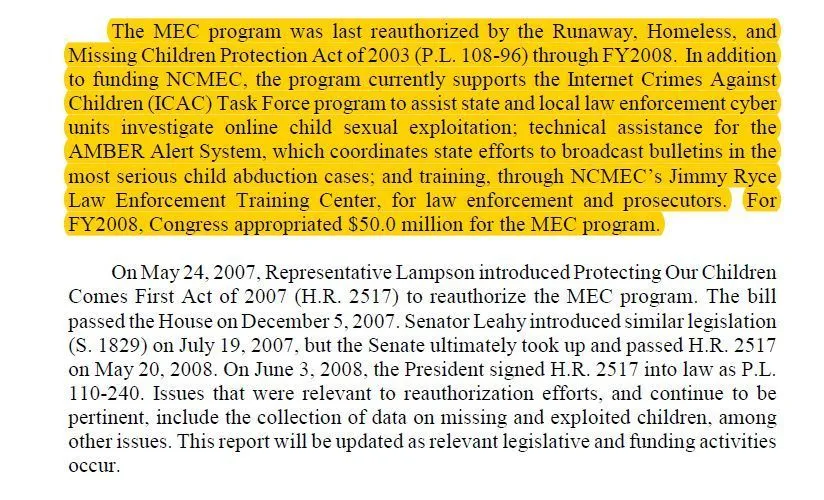
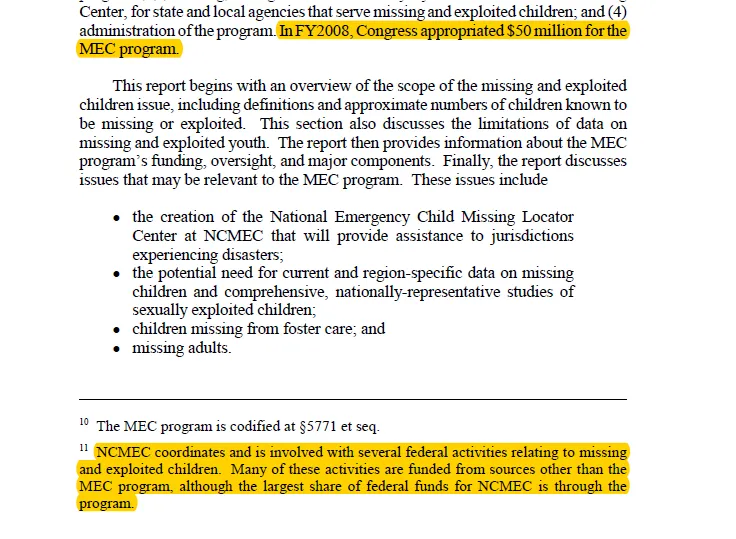

The 2008 CRS report released by Wikileaks in 2009, demonstrates that US government agencies throw money at the NCMEC even without receiving a request for funding.
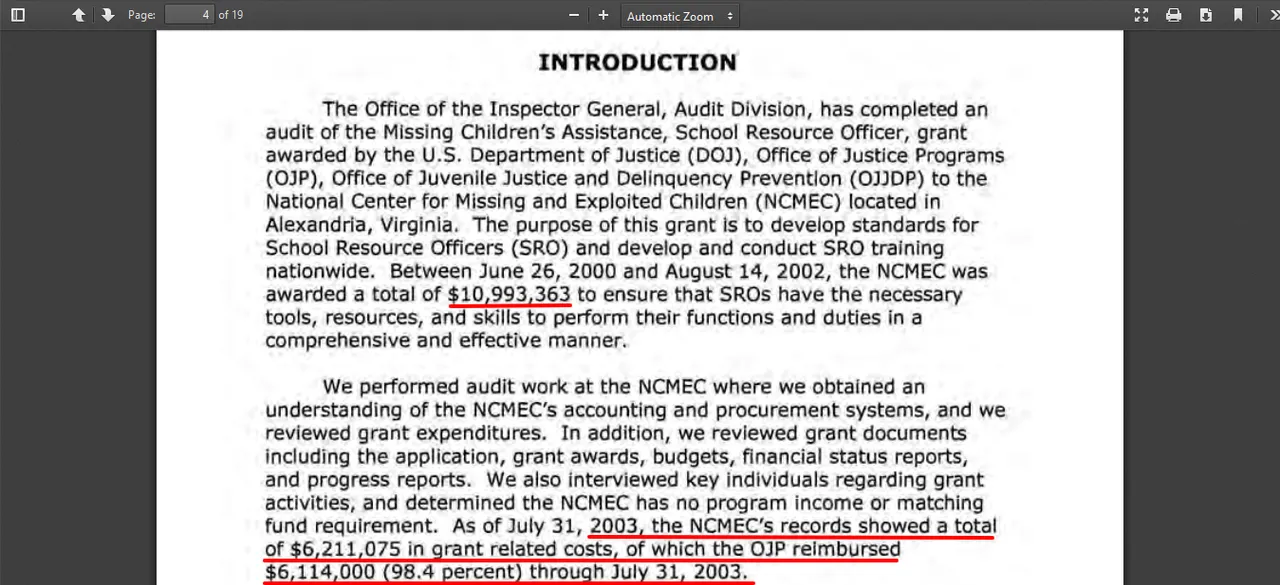
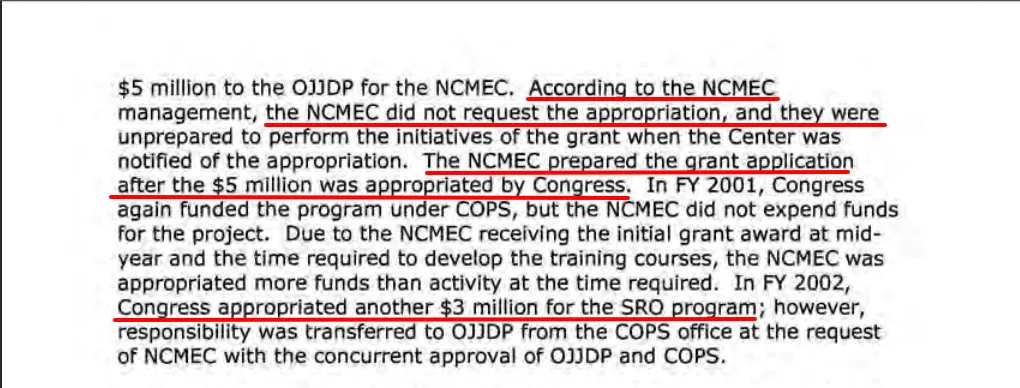
Source: Wikileaks Downloadable PDFs
Missing Children, Missing Statistics
Finding reliable statistics on missing people (adults and children) is not an easy task. The FBI’s National Crime Information Center (NCIC) releases annual missing person and unidentified person statistics. However, the way in which the data is categorizes makes it difficult for the average person to make sense of.
Statistical categories include ‘file transactions’, ‘records entered’, ‘records removed’, ‘clears & cancels’, ‘locates’ and ‘modified’. Being a layman, I will assume that ‘records entered’ represents new cases of missing persons. So, this would mean that in 2016 there were 647, 435 missing persons logged as ‘records entered’. Now bear in mind that these are reported cases only. Unfortunately, these statistics do not give us any specific information about missing children or from where people went missing.
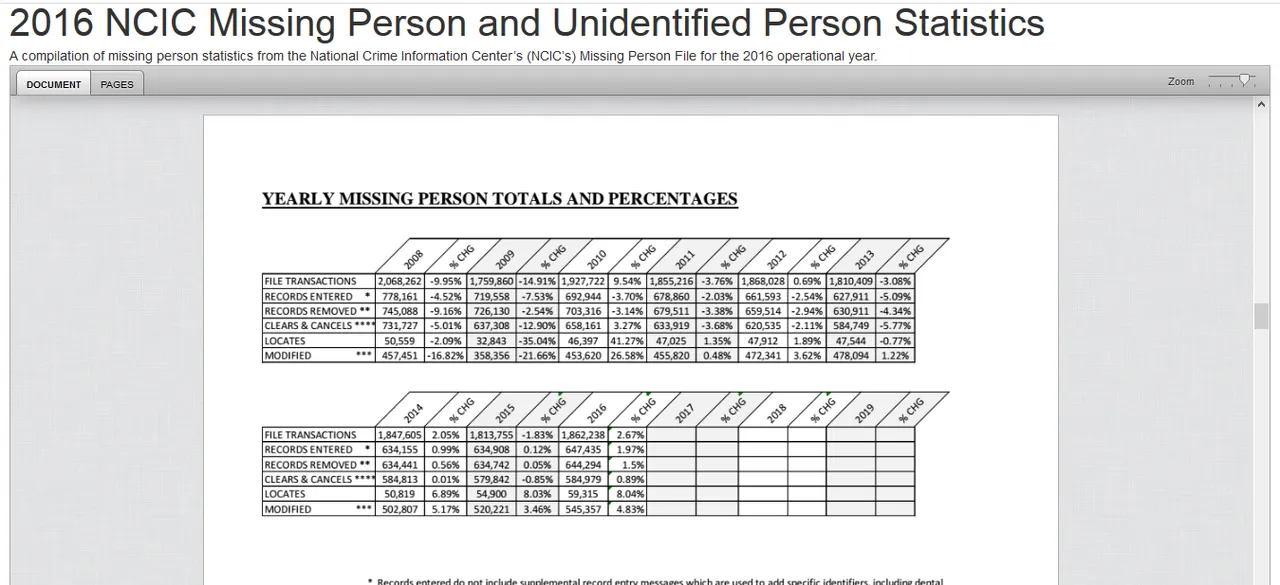
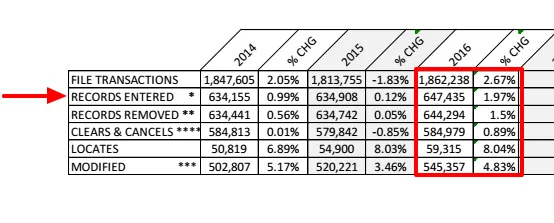
Source: FBI / NCIC
The States with the Most Missing Person Cases
This 2015 national infographic from the Huffington Post was apparently created by compiling 2014 state statistics. According to the infograph, the states with the highest rate of open missing persons cases per 100,000 people are Arizona, Alaska and Oregon.

Inevitably, reliable statistics on missing children are also difficult to come by. The NCMEC doesn’t make complete and comprehensible statistics on missing children accessible to the public. There may be good reason for this and although general information is provided, raw data on national rates is not readily available.
If you query “rates of missing children by state” into a search engine the results are less than satisfactory. Most sites will direct you to the NCMEC website or take you to a single state webpage that may have incomplete data.
One particular webpage caught my eye, however, an [IWB] (http://investmentwatchblog.com) piece entitled: Unexplained rates of missing children around Washington DC.
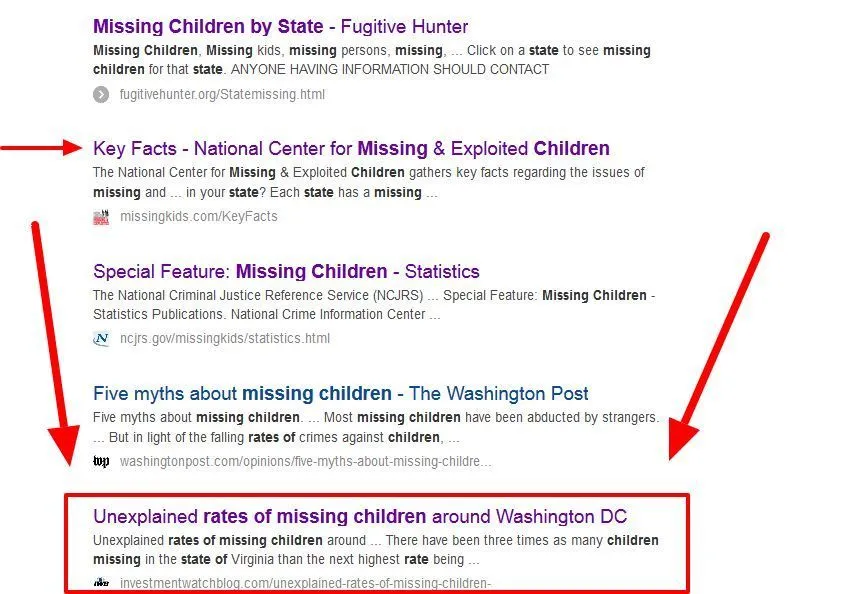
Unfortunately, this article may have been scrubbed from the net, when you click on the link you get the ubiquitous message:
Error 404 Page Not Found
Key Facts Regarding Missing Children
According to the NCMEC, it’s impossible to determine the total number of missing children accurately because many cases of missing children go unreported. Another reason why reliable statistics are hard to determine is that when a child runs away on multiple occasions, each instance is recorded as a separate event.
We can find statistics on missing children by following this link:
http://www.missingkids.com/KeyFacts
According to the FBI, in 2016 there were 465,676 NCIC entries for missing children. Similarly, in 2015, the total number of missing children entries into NCIC was 460,699.
It’s estimated that 800, 000 children go missing in America every year and 8 million children go missing worldwide.
In the introduction for an ICMEC annual report, Ernie Allen (former CEO of NCMEC) states:
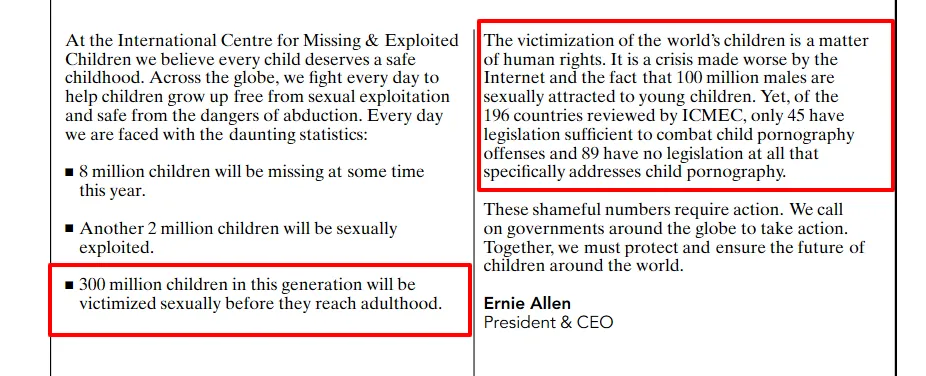
8 million children go missing every year
2 million children will be sexually exploited
300 million children in this generation will be victimized sexually before they reach adulthood.
100 million males are sexually attracted to young children
“These shameful numbers require action.”
Just how the NCMEC determines the sexual desires of 100 million males is not elaborated on. Perhaps it is in relation to internet habits and downloading of child pornography but even still the number seems very high and somewhat arbitrary.
For addition general facts on missing children see factretriever.com
Despite the common belief that children are taken by strangers, experts say that this type of child abduction makes up only a very small percent of cases. According to the director of the Crimes Against Children Research Center at the University of New Hampshire, David Finkelhor:
Far more common are children who have run away, have gotten lost or injured, have been taken by a family member (usually in a custody dispute) or simply aren’t where they’re expected to be because of a miscommunication. The only scenario more unusual than stereotypical kidnapping is when families falsely report a child as missing to disguise murderous deeds.
Source: Washington Post Op-Ed
Virginia: The Bermuda Triangle of Missing Children
There’s something strange going on in Virginia. Although the US government does not provide statistics showing state-by-state comparisons of missing children, researchers have been able to piece together a composite map drawing from the data that is publicly available.
In December of last year, Virginia resident and researcher, Den Skjult, did some number crunching using statistics provided on the National Center for Missing and Exploited Children (NCMEC). What he uncovered was that the rate of missing children per 100,000 people was disproportionately high in Virginia in 2016. In fact, Virginia topped the list for missing children per 100, 000 people doubling the rates in both New York and California. According to Den Skjult’s calculations, nearly 20% of all reported missing children in 2016 originated in Virginia.

In this video, Den Skjult discusses his research with YouTuber Rainbow Sally.

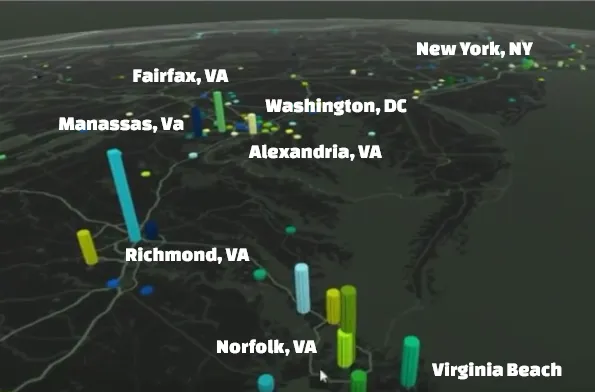
Washington DC has a population of roughly 675, 000 people. There were only 2 reported cases of missing children in 2016. The closest major US city is Baltimore Maryland. The state population is approximately 6 million people. There were 28 reported cases of missing children for the year 2016.
In a state-to-state comparison, Pennsylvania (est. pop. 13 million) reported 41 missing children for the period. While Virginia (est. pop. 8.4 million) reported 315 missing children.
With a rate of 3.76 missing children per 100, 000 people, Virginia far exceeds all other states in the nation.
Virginia – 315 missing – 3.76 / 100,000
Florida – 177 missing - 0.87 / 100, 000
Texas – 151 missing - 0.55 / 100, 000
California – 162 missing – 0.41 / 100, 000
New York – 74 missing – 0.37 / 100, 000
Are the numbers skewed? Skjult concedes that it’s possible that the numbers are not entirely accurate as some states / counties / cities may have not entered/submitted their data to the NCMEC or NCIC. It’s quite possible that Virginia diligently submits their data while other states are submitting incomplete data sets. Therefore, incomplete data could account for some discrepancies.
Virginia: Home to the NCMEC and ICMEC
It’s interesting to note that the headquarters for both the NCMEC and the ICMEC are located just outside Washington DC in Alexandria Virginia. The NCMEC spearheads the national effort to combat the exploitation of children, child abuse, kidnappings and human trafficking.
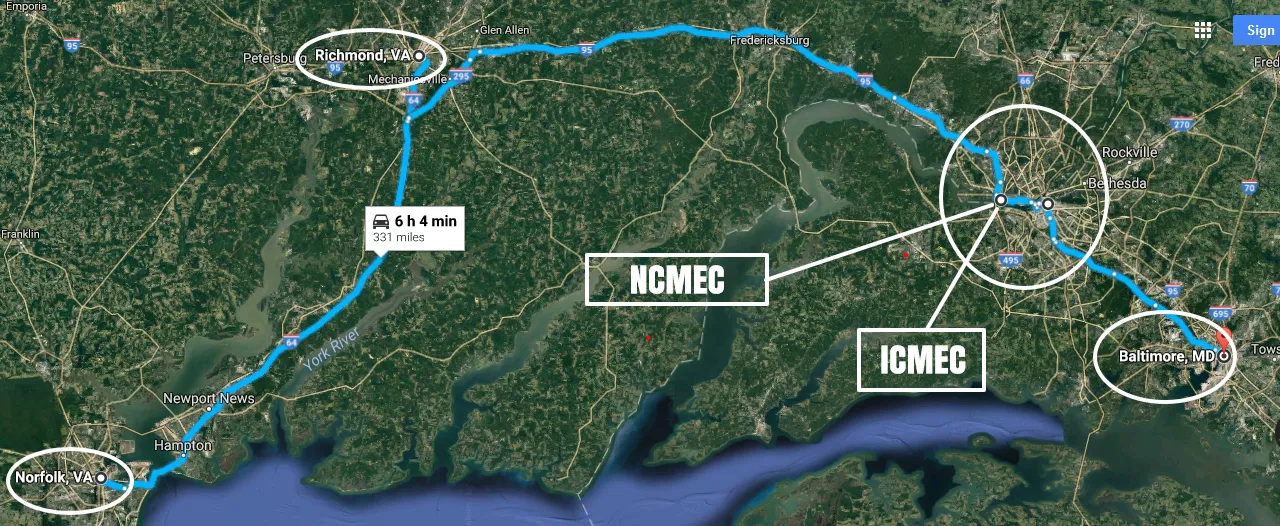
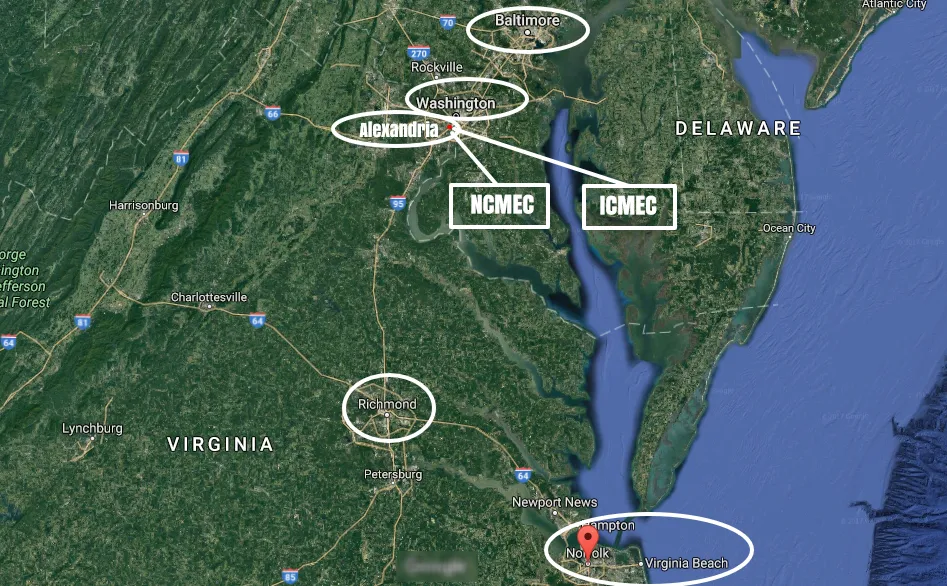
The NCMEC acts as a national clearing house for missing children and provides a searchable database profiling children who have disappeared. Incredibly, there are more children who have gone missing in Alexandria (13), Fairfax (27), Manassas (20), Newport (20), Virginia Beach (18) and Richmond (44) than those that have gone missing in DC (2).
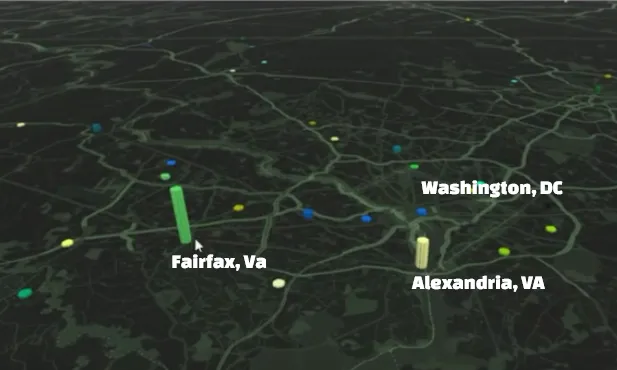
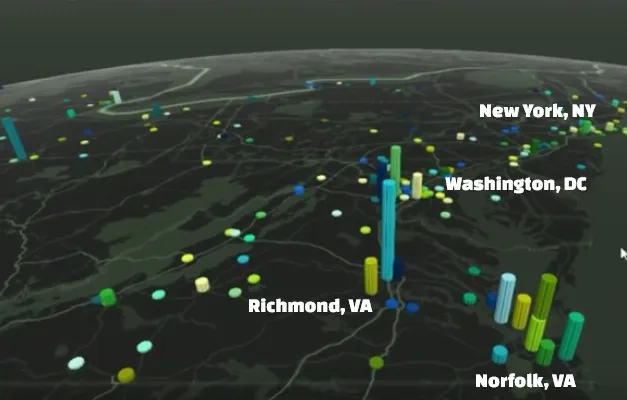
Comparatively, Los Angeles reported 54 missing children in 2016 yet the population of (metro) Los Angeles is close to 19 million while Richmond Virginia has a population of about 210, 000 residents.
The area of Norfolk and Virginia Beach also appears to be a hotbed for missing children.
http://hamptonroads.com/newsdata/crime/virginia-beach/type/missing-person
NCMEC Database Virginia
By entering a name, date, location or a combination of the three into the NCMEC searchable database we can bring up individual profiles of missing children.
Here’s a screenshot of some of the profiles of missing children in Virginia. As you can see there are a number of profiles that are missing key information such as: a photo, date of birth or age of the missing child.

Link to NCMEC missing page - Virginia
Conclusion
While the 2016 data is intriguing, the researcher mentions in the video that the years preceding the data set are more uniform and do not show disproportionate rates in Virginia. It makes you wonder; were the results from 2016 just a result of poor reporting and incomplete data entries? Or was there something more sinister going on in Virginia during that time? If we're to trust the experts in the field, such as Finkelhor, then the anomalies of 2016 can be explained by increases in runaways, injuries and miscommunication. So, move along. Nothing to see here.

